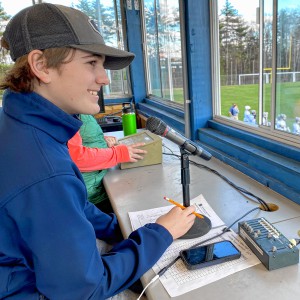N.H. lags in luring offshore wind’s economic benefits
| Published: 06-07-2023 7:00 AM |
As New England states rub their hands in gleeful anticipation of an economic benefit from offshore wind power, New Hampshire risks being left on the sidelines.
The problem isn’t our short coastline, however; it’s our government’s actions. Or inactions.
“One thing that is driving a lot of where the supply chain and ports and jobs are located for this industry is state procurements, where a state promises to buy a certain number of megawatts. States can require or encourage certain things to be located in their state or region. New Hampshire doesn’t have a procurement, so the companies have less incentive to locate in New Hampshire right now,” said Carol Oldham, New England director for the industry group Business Network for Offshore Wind.
Oldham made the comment Monday during a webinar sponsored by New Hampshire Network, an environmental group. The session featured some eye-popping data about investment money and jobs being created by the country’s belated move to build offshore wind farms, fueled by the Biden Administration’s goal of having 30,000 megawatts – 30 gigawatts – of offshore wind power operating by 2030.
The U.S. has virtually no offshore wind power at all right now compared to 22 gigawatts operating in China and 18 gigawatts in Europe. Construction has begun on Vineyard Wind 1 south of Cape Cod, an 800-megawatt facility that will be the nation’s first of any size and is set to begin producing power in 2025.
“We are seeing significant investment in the supply chain, significant manufacturing,” Oldham told the webinar. “Monopiles are being built in the U.S., turbines manufactured in the U.S., being carried in U.S. vessels.” She said the group knows of around 1,120 contracts signed in 2021 and 2022 for everything from massive ships to small electronic components, totaling some $17 billion.
“A common misperception is that a lot of this work is going to overseas manufacturing, but a vast majority of it is flowing to the U.S., and the IRA (Inflation Reduction Act) is just going to enhance that,” she said. The IRA includes direct support for domestic manufacturing of clean energy supply chains, as well as tax credits for developers who install domestically sourced equipment at clean power plants.
Joe O’Brien, political and legislative director of the North Atlantic States Regional Council of Carpenters, talked during the webinar of hundreds of high-paying specialty jobs that will be created on the ocean to build and maintain the first batch of wind farms, and many thousands of jobs to be created onshore to supply the industry.
Article continues after...
Yesterday's Most Read Articles
He pointed to a national trade agreement involving 15 large unions and the developers of Vineyard Wind. “That makes it easier for unions like ours to make big investments … to help train our workforce, because we know there will be good jobs at the end of it.”
Two bills seeking to improve New Hampshire’s status in the offshore-wind race are in the works.
SB152, which is awaiting Gov. Sununu’s signature, would establish a “marine trades pathway at a regional career technology center,” set up a workforce development and innovation fund, and an “offshore wind industry workforce training center committee.”
While important, that is well behind some of the state’s neighbors. Rob Werner, Concord city councilor who is state director of the League of Conservation Voters, noted that Massachusetts is already training people through a National Offshore Wind Institute at Bristol Community College in Fall River, a city on Narragansett Bay from which a lot of Vineyard Wind production will be shipped. Late last year, the University of Maine, which has long had an aggressive research program into wind power, launched a training program that targeted offshore wind.
Another New Hampshire bill, SB54, which passed the state Senate and is being considered by the House on Thursday, would allow the three power utilities in the state to enter 20-year power-procurement agreements, an important move to allow them more eligible for the long-term contracts with huge clean-energy projects like offshore wind farms.
Unlike all other New England states, however, it does not include any specific requirement for procuring clean energy, which may limit its effectiveness.
“If you’re not fully invested in the game … you’re not going to be able to take full advantage of the opportunities,” said Werner.
]]>


 Voice of the Pride: Merrimack Valley sophomore Nick Gelinas never misses a game
Voice of the Pride: Merrimack Valley sophomore Nick Gelinas never misses a game With less than three months left, Concord Casino hasn’t found a buyer
With less than three months left, Concord Casino hasn’t found a buyer Kearsarge Middle School drone team headed to West Virginia competition
Kearsarge Middle School drone team headed to West Virginia competition Phenix Hall, Christ the King food pantry, rail trail on Concord planning board’s agenda
Phenix Hall, Christ the King food pantry, rail trail on Concord planning board’s agenda
